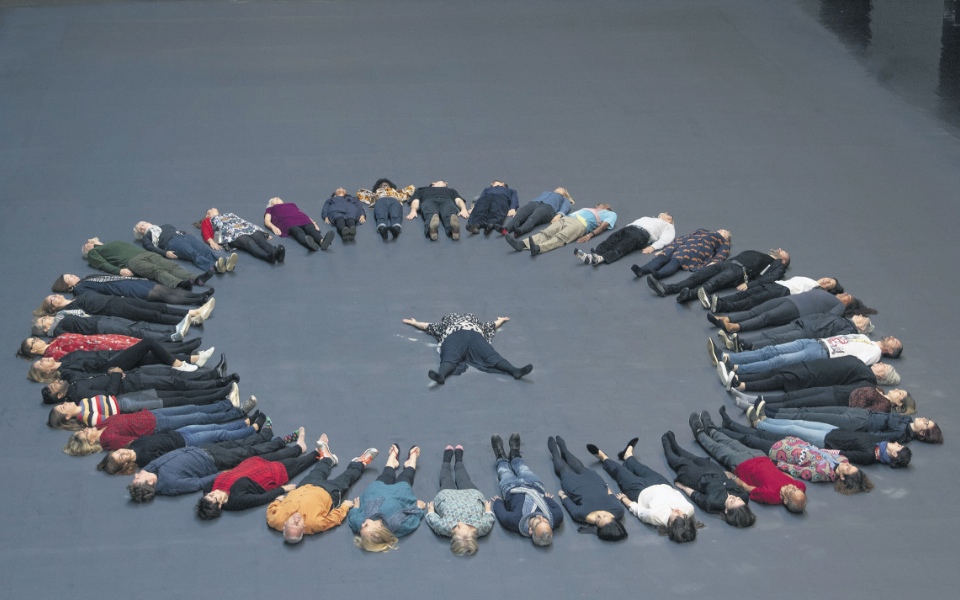Tania Bruguera in the Tate Modern Turbine Hall continues a downward trend for the once great exhibition space

The Turbine Hall is the toughest gig in contemporary art. While it must feel like a dream commission, it often proves to be a poisoned chalice.
Filling the largest public exhibition space in the world requires massive art and super-massive ideas. It needs to be engaging, without descending into a crowd-pleasing fairground attraction. And while the Tate Modern has grown exponentially in confidence and scope in the 18 years since it opened, it’s getting difficult to ignore the fact that the Turbine Hall’s glory days feel like an awfully long time ago.
The early years were a roll-call of brilliant, large-scale installations. Louise Bourgeois’ towering steel spiders were followed by Anish Kapoor’s bonkers 500ft red trumpet. Then came Olafur Eliasson’s vast, ever-setting sun that bathed the space in dying, orange light. There was Rachel Whiteread’s collection of 14,000 casts of cardboard boxes stacked high up the walls; Doris Salcedo’s Shibboleth that formed a giant crack down the centre of the hall; Carsten Höller’s twisty silver slides. In 2010 came Ai Wei Wei’s blanket of several million hand-painted sunflower seeds, which was great until the public were banned from interacting with them owing to safety concerns. And since then… Not much.
Abraham Cruzvillegas’ Empty Lot collected giant planters of soil from various London parks. The hope was that stuff would grow in them but not much did. Philippe Parreno’s attempt to turn the space in to an aquarium using helium-filled fish balloons was forgettable. Last year’s Superflex brought a big, interconnected swing-set into the space which was… fine.
Tania Bruguera’s installation highlighting the plight of the world’s migrants and refugees continues the downward trend. Its principles are certainly laudable, but it just doesn’t work as a piece of large-scale public art. The lower portion of the space is covered with heat sensitive panels that, if all warmed up at once would reveal the face of a Syrian migrant, although even the gallery has admitted that it’s virtually impossible to achieve. When I was there it was full of children dragging each other across the floor and performing cartwheels. None of them appeared to be thinking about migration.
A smaller room is filled with a kind of eucalyptus gas that makes your eyes water, which seems to be a statement about how people need to be forced to get emotional about horrors experienced by others. As you enter you get a stamp with the total number of people who migrated from one country to another last year, plus the number of migrant deaths since the start of this exhibition (a rather arbitrary number); mine was 10,143,111.
Elsewhere small images accompanied by Arabic text litter the ground – a metal door, a morgue, general urban squalor. These might represent the chaotic, unintelligible world faced by migrants, although my lasting impression was of the attendant whose job it was to shout at children who trod on them.
There is some genuinely breathtaking large-scale installation work taking place on the South Bank, but it’s a few minutes down the road at the Hayward Gallery; the Tate Modern should take note.
